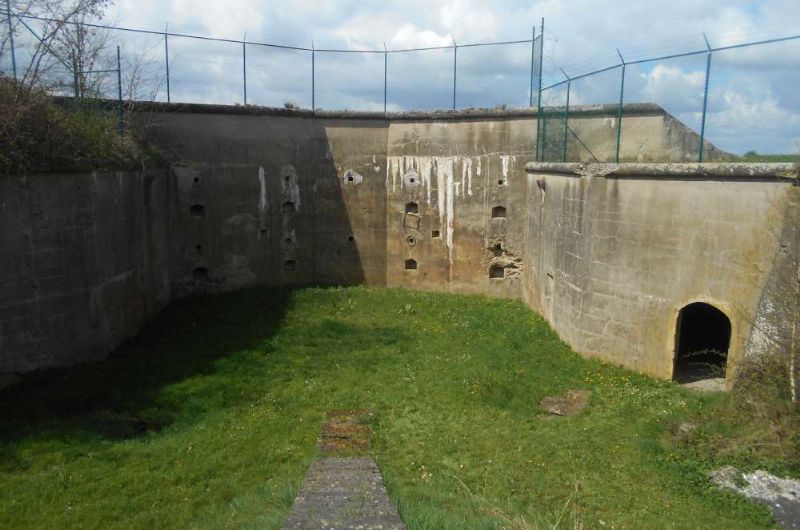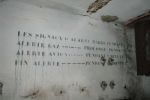Fort de Hollogne
The fort de Hollogne is one of the 12 forts making up the fortified position of Liège in late 19th-century Belgium. It was built between 1888 and 1892 to designs by General Brialmont. Unlike the French forts built during the same period by Raymond Séré de Rivières, it was built entirely of unreinforced concrete, a new material for the time, rather than masonry. The fort was heavily bombed in the First World War during the Battle of Liège.
Contrary to other Liège forts, it was never modernized during the interwar period. The fort is located about 8 kilometers west of the center of Liège, next to today's Bierset airport.The fort forms an isosceles triangle with a base 200 m long and sides 225 m long. A moat 6 meters deep and 8 meters wide surrounds the fort. The main armament is concentrated in the central massif. The ditches were defended in enfilade by 57 mm cannons placed in casemates in the counterscarp wall This is one of the smallest forts in the fortified position With the exception of the Fort de Loncin, Belgian forts had few provisions to support the daily stewardship of a garrison in wartime. What's more, the latrines, showers, kitchen and mortuary were located in the counterscarp, an untenable position in battle.
This would have a major impact on the forts' ability to withstand a prolonged assault. The service area was placed directly opposite the barracks, which opened onto the ditch at the rear of the fort (towards Liège), with less protection than the two lateral ditches. The rear of the Brialmont forts was more lightly defended to facilitate recapture by the Belgian armed forces. The rear ditch provided natural lighting and ventilation. In battle, artillery fire made the ditch untenable, and Germans who were able to pass between the forts could attack them from the rear.Hollogne Fort's armament included for long-range targets a Grüsonwerke turret with a 21 cm Krupp howitzer, a Creusot turret with 2 15 cm guns and two Châtillon-Commentery turrets featuring 1 12 mm Krupp gun. For close defense, it had 3 Grüsonwerke eclipsible turrets with a 57 mm gun. The fort also had an observation turret equipped with a searchlight. The casemates protecting the ditches and the postern were equipped with 7 rapid-fire 57 mm guns. The fort's heavy artillery consisted of German Krupp guns, while the turrets came from a variety of sources. Communication between the neighboring forts of Loncin and Liers was by means of light signals. The fort was manned by a garrison of 230 artillerymen and 120 infantrymen and commanded by Captain-Commander Cuisinier.
Photos: Alain Walthery
Text: wikipedia




